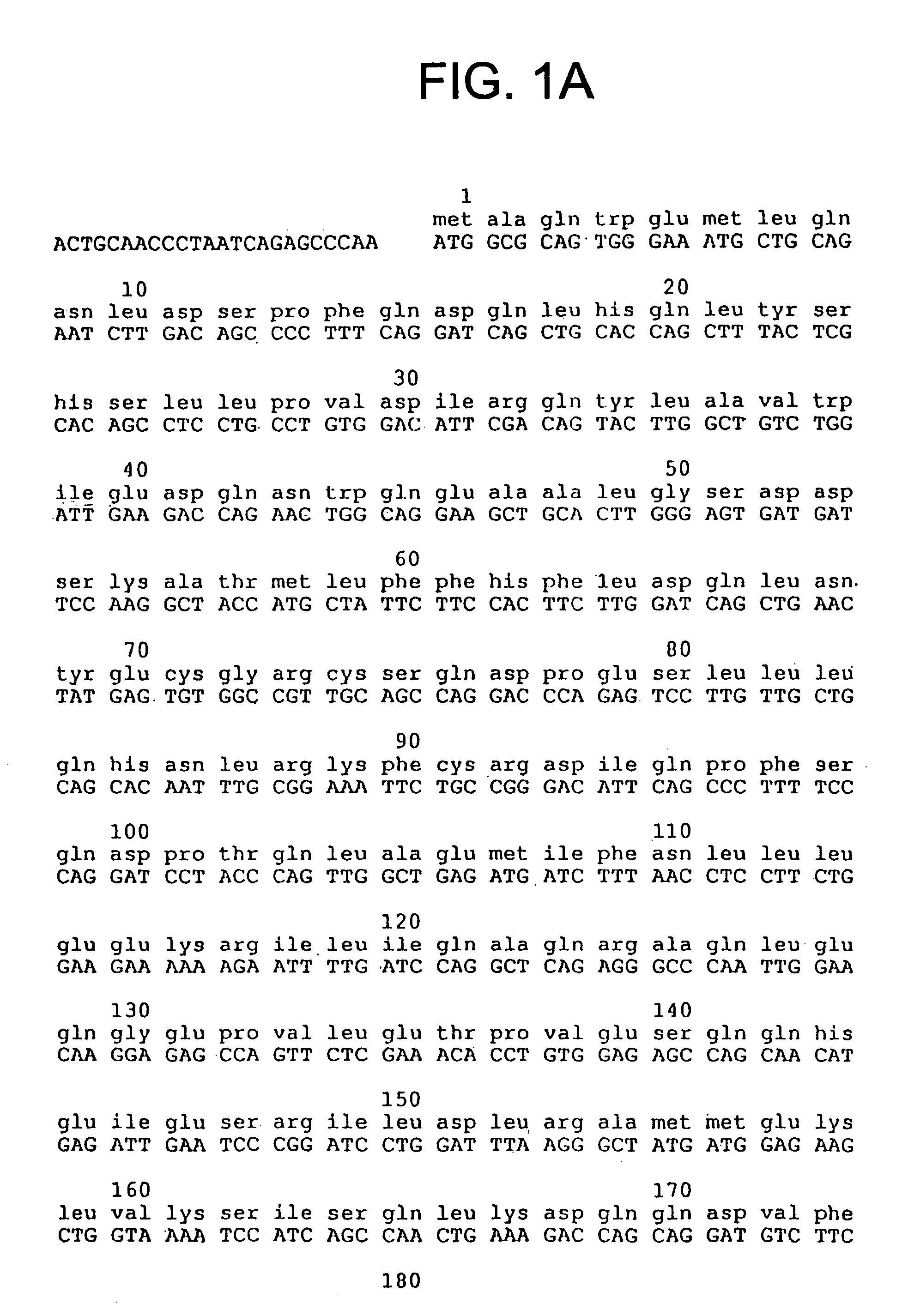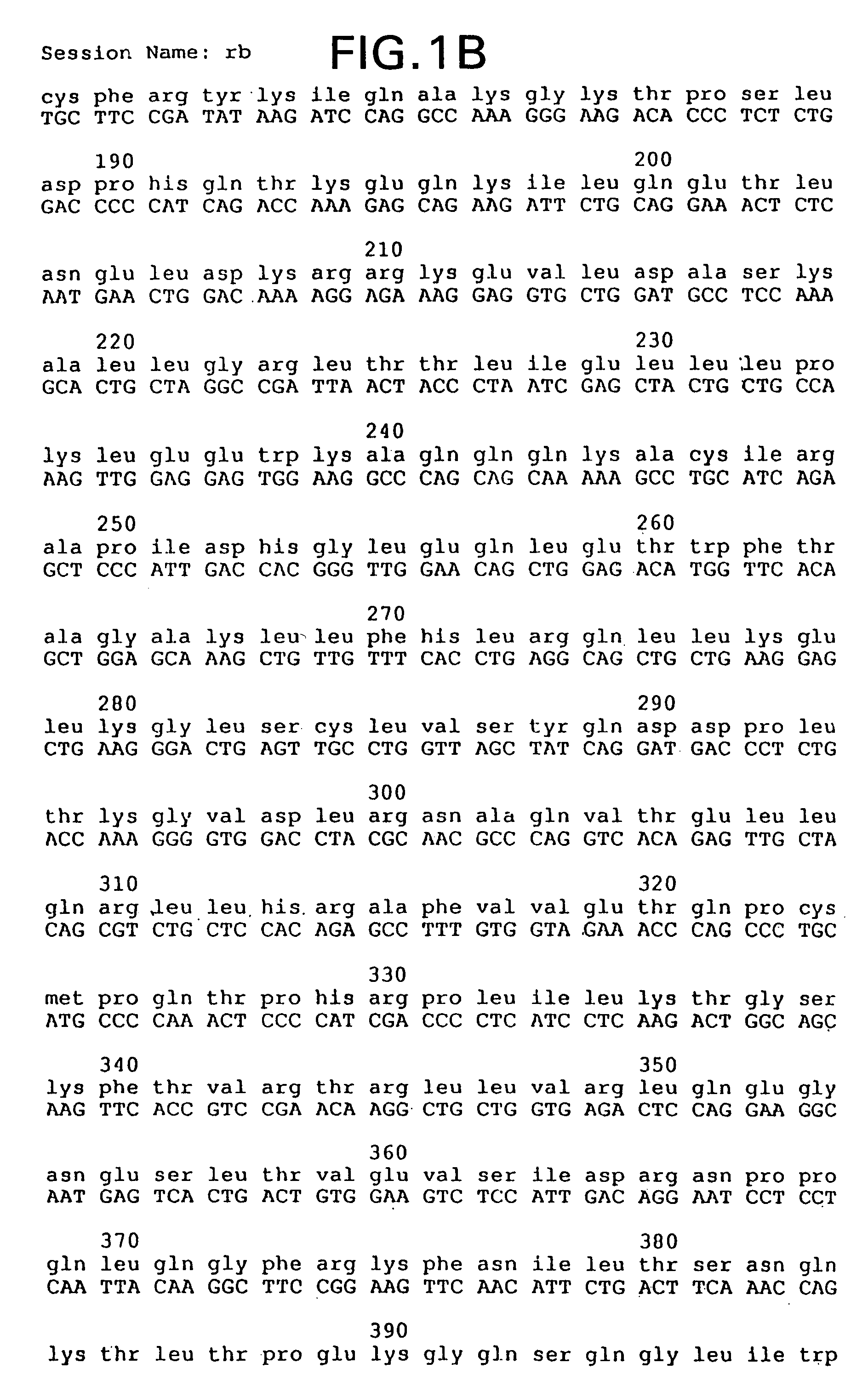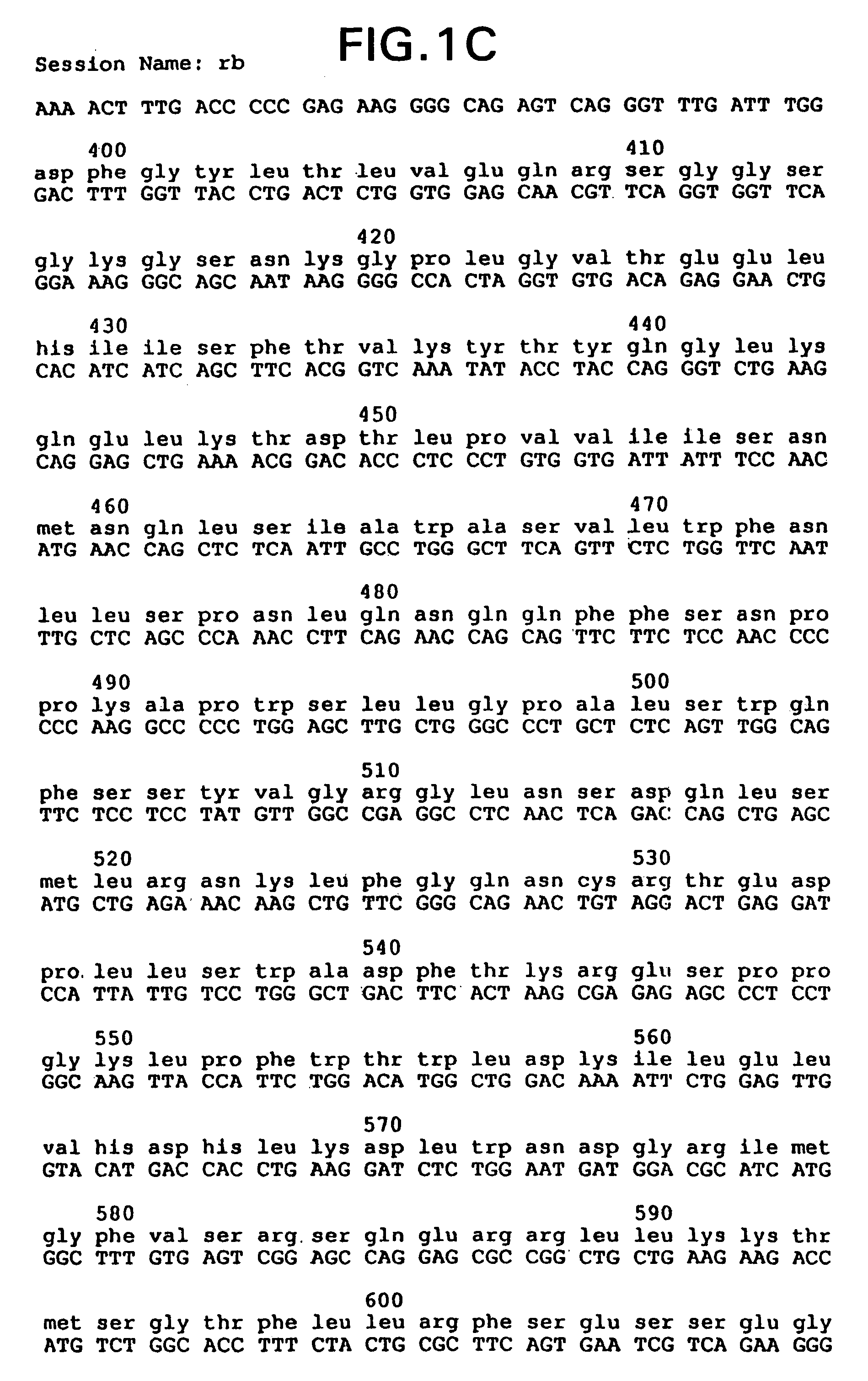Nucleic acids encoding receptor recognition factors, and methods of use thereof
a technology of recognition factors and nucleic acids, applied in the direction of peptides, immunoglobulins against animals/humans, dna/rna fragmentation, etc., can solve the problem that the high degree of specificity observed in polypeptide-dependent transcriptional responses cannot be adequately explained by hypotheses related to signal transduction pathways in the cytoplasm, and achieve the effect of enhancing such activity
- Summary
- Abstract
- Description
- Claims
- Application Information
AI Technical Summary
Benefits of technology
Problems solved by technology
Method used
Image
Examples
example 1
[0236]To purify relatively large amounts of ISGF-3, HeLa cell nuclear extracts were prepared from cells treated overnight (16-18 h) with 0.5 ng / ml of IFNγ and 45 min. with IFN-α (500 u / ml). The steps used in the large scale purification were modified slightly from those described earlier in the identification of the four ISGF-3 proteins.
[0237]Accordingly, nuclear extracts were made from superinduced HeLa cells [Levy et al., THE EMBO. J., 9 (1990)] and chromatographed as previously described [Fu et al., PROC. NATL. ACAD. SCI. USA, 87 (1990)] on: phosphocellulose P-11, heparin agarose (Sigma); DNA cellulose (Boehringer Mannheim; flow through was collected after the material was adjusted to 0.28M KCl and 0.5% NP40); two successive rounds of ISRE oligo affinity column (1.8 ml column, eluted with a linear gradient of 0.05 to 1.0M KCl); a point mutant ISRE oligonucleotide affinity column (flow through was collected after the material was adjusted to 0.28M KCl); and a final round on the IS...
example 2
[0247]In this example, the cloning of the 113 kD protein that comprises one of the three ISGF-3α components is disclosed.
[0248]From SDS gels of highly purified ISGF-3, the 113 kD band was identified, excised and subjected to cleavage and peptide sequence analysis [Aebersold et al., PROC. NATL. ACAD. SCI. USA, 87 (1987)]. Five peptide sequences (A-E) were obtained (FIG. 8A). Degenerate oligonucleotide probes were designed according to these peptides which then were radiolabeled to search a human cDNA library for clones that might encode the 113 kD protein. Eighteen positive cDNA clones were recovered from 2.5×105 phage plaques with the probe derived from peptide E (FIG. 8A, and the legend): Two of them were completely sequenced. Clone f11 contained a 3.2 KB cDNA, and clone ka31 a 2.6 KB cDNA that overlapped about 2 KB but which had a further extended 5′ end in which a candidate AUG initiation codon was found associated with a well-conserved Kozak sequence [Kozak, NUCLEIC ACIDS RES., ...
example 3
[0256]As mentioned earlier, the observation and conclusion underlying the present invention were crystallized from a consideration of the results of certain investigations with particular stimuli. Particularly, the present disclosure is illustrated by the results of work on protein factors that govern transcriptional control of IFNα-stimulated genes, as well as more recent data on the regulation of transcription of genes stimulated by IFNγ.
[0257]For example, there is evidence that the 91 kD protein is the tyrosine kinase target when IFNγ is the ligand. Thus two different ligands acting through two different receptors both use these family members. With only a modest number of family members and combinatorial use in response to different ligands, this family of proteins becomes an even more likely possibility to represent a general link between ligand-occupied receptors and transcriptional control of specific genes in the nucleus.
[0258]Further study of the 113, 91 and 84 kD proteins ...
PUM
| Property | Measurement | Unit |
|---|---|---|
| temperature | aaaaa | aaaaa |
| thick | aaaaa | aaaaa |
| thick | aaaaa | aaaaa |
Abstract
Description
Claims
Application Information
 Login to View More
Login to View More - R&D
- Intellectual Property
- Life Sciences
- Materials
- Tech Scout
- Unparalleled Data Quality
- Higher Quality Content
- 60% Fewer Hallucinations
Browse by: Latest US Patents, China's latest patents, Technical Efficacy Thesaurus, Application Domain, Technology Topic, Popular Technical Reports.
© 2025 PatSnap. All rights reserved.Legal|Privacy policy|Modern Slavery Act Transparency Statement|Sitemap|About US| Contact US: help@patsnap.com



